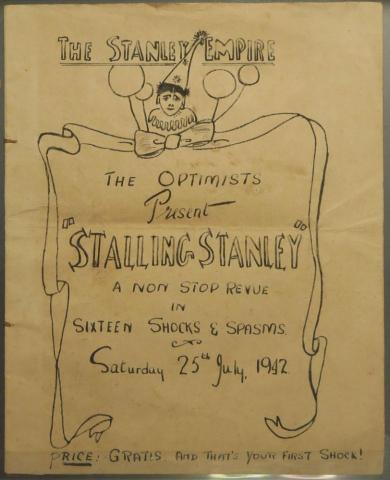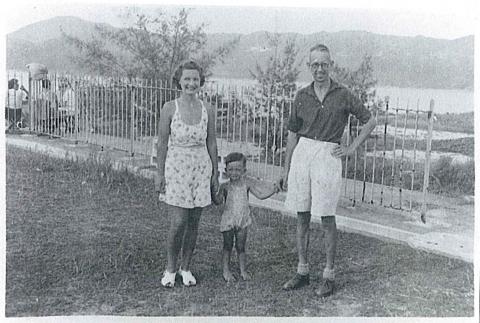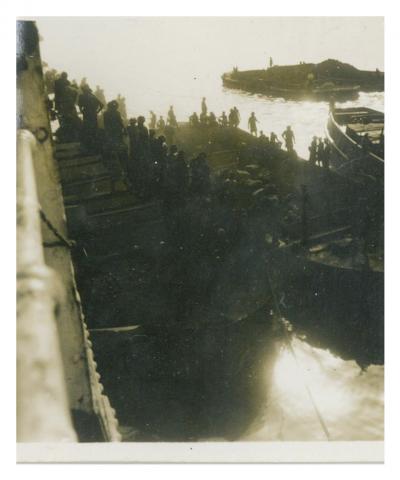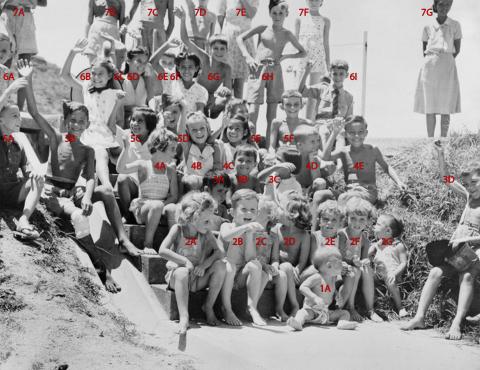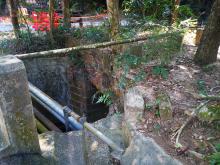((On board the Gripsholm, nursing sister May Waters writes out the following report from the New Zealand Internees Association she'd been given to memorise before leaving Stanley. She attaches a covering letter and sends them both to Mr Thomson, father of one of the internees.))
M.S. Gripsholm
29.10.43
Dear Mr. Thomson,
Better introduce myself first, one of the Canadian sisters that was at Bowen Rd and Stanley Internment Camp with your daughter Kathleen.
The enclosed report is from the New Zealanders in Camp and your son, Peter, asked me if I would send it to you and ask you to send it to the New Zealand Government and to use your own judgment showing it to anyone else.
I only received it 4 days before leaving camp and had to memorise it during a very busy time. I know I haven't the exact words in two or three places but quite sure I have conveyed the same meaning.
Kae Christie ((sic.)) the other Canadian sister was going to write Mrs. Thomson but as she has a great many letters to write perhaps this one can do two duties.
Kathleen and Peter are thin but both fairly well. Everyone is lacking in energy but I must say your two keep themselves fairly busy. Believe Peter is teaching as well as the other duties there are to do, depending what squad you are in, rations, wood cutting etc. Kathleen always seems to be busy too. If not studying she's looking after someone's child. ’’Aunty Kate” is quite a favorite.
Kathleen has received several letters from home but can't understand why you don’t tell her the names of the new nieces and nephews. Since June mail has been gradually trickling through. Very little before that and some still not getting any.
Kae and I consider ourselves extremely lucky to be on our way home and we do hope the others will get out next month. Altho' we are on the Gripsholm we still receive very little news.
I do hope all the Red Cross boxes we saw being loaded on the Teia Maru are safely delivered in Hong Kong before long. Food and medical supplies are needed badly. Kathleen does’nt expect to get home directly they are repatriated but thinks she will have to go wherever the S.A’s are sent. ?? ((right edge of page damaged, and some text not clear)) course one can never tell. Perhaps we may meet in England. Just at l??? keep in touch.
Hope you receive a letter from both Kathleen and Peter. Letter?? were supposed to of come out at the same time. Don’t worry about them, ?? sure Kathleen will be out soon and there should be food for the men.
This is a very disjointed letter but it is rather dfficult to know just what to tell you. You can really get it all from the N.Z. report. It was a great pleasure knowing and working with your daughter. She did ?? wonderful job. Both send their love to all the family.
Sincerely yours,
May Watus. ((sic.))
NEW ZEALAND.
This report is sent by the New Zealand Internees Association to supplement the private and general report of the Camp to the British Government.
We suggest that if you have not a copy of the latter report, you obtain one as soon as possible.
STATUS OF N.Z.I.A.
This Association was formed by the unanimous vote of all New Zealanders interned in Stanley.
Present officials are:- L. Thomson (Chairman) ((Possibly L O Thompson?)); R.Wild (Secretary); T. Williamson (Hon.Government Representative). ((Not sure who this was.))
There is another organisation known as the Australian and New Zealand Society but it is not representative of New Zealanders in Hong Kong or in Camp.
PERSONNEL.
The New Zealanders in Stanley now number 16 males 8 females (all adults). 4 adults and 2 children returned to Shanghai last year. There have been no deaths among New Zealanders in Stanley.
REPORT ON HEALTH AND NUTRITION OF NEW ZEALANDERS IN STANLEY INTERNMENT CAMP, HONG KONG.
A report on Health and nutrition of New Zealanders in Stanley Internment Camp, Hong Kong, as it reflects on the condition of rations of the whole Camp, requires a general introductory paragraph.
Their total caloric value has been as low as 1385 calorus per head per day with 44 grammes of protein, and never higher than 2000 calorus with 60 grammes of protein. This level was reached the 3rd quarter of 1942 and was followed by a steady fall to the present level of 1564 calorus with 44 grammes of "polished" rice and much of the other foods supplied (such as water-buffalo beef, Pacific conger-eel, Chinese "water-spinach") are of a kind not ordinarily regarded fit for human consumption.
I have examined 20 New Zealanders, all but 4 of the total number interned. According to their state of health and nutrition and with the observation that none may be classed as good, I group them as follows:-
| 9 persons fairly good |
5 persons fair |
| 2 persons poor |
4 persons very poor. |
16 persons have lost an average of 20.2% of their known pre-war weight and a majority continue to lose, 2 only (both women) have gained a little and concerning the remaining two the facts were not available.
12 persons have required treatment for specific nutritional diseases. 5 of these for more than one "malnutrition" deficiency. 9 required Thiamen Treatment for beri beri and allied conditions; 5 required Nicotinic Acid treatment for early signs of pallagra; 1 required treatment for central blindness (Reboflavin deficiency) newly observed in Stanley; 2 required treatment for non-specific malnutrition status.
I have compared these "weight" and "malnutrition" figures with those from a recent general Camp survey and find they correspond closely, so that the findings of the small New Zealand unit are roughly representative of the state of nutrition of the whole camp.
One may fairly conclude that the rations provided to the Internees by the authorities are insufficient and unsuitable to maintain health and prevent the occurrence of potentially fatal nutritional diseases. That these have been prevented and successfully treated is due entirely to the supplementary food and vitamin factors supplied by the Red Cross authorities. Failing these our mortality and morbidity rate must have been overwhelming.
Of general diseases - There have been 5 cases of dysentery, one case of typhus, 1 of erysipelas and 5 cases of moderately serious septic conditions.
(Sgd.) John Allistair Loan. M.B., S.S'c.
17.9.43
GENERAL.
The chief anxiety is that the situation regarding food and medical supplies (especially deficiency prophylactics) may become even more critical as the blockade increases.
Therefore, failing repatriation, either under a separate scheme or in conjunction with other British Nationals, we urgently request your co-operation with, or promotion of any scheme to ensure regular relief supplies.
Financial relief, although a help, is not a solution owing to lack of supplies, exorbitant prices and restrictions on purchases by internees.
Allowances irregular, maximum M. Y. 25 buys precisely 3.12 oz tins of canned mutton.
Geographical position of Hong Kong is a big hurdle regarding provisions.
(Sgd.) L. Thomson
Chairman
New Zealand Internees Association
Stanley, Hong Kong.
((Transcribed from the copies held at the UK National Archive, their ref: CO 980/120.))
